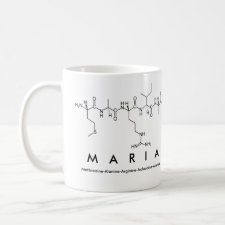
Authors: Yarman A, Dechtrirat D, Bosserdt M, Jetzschmann KJ, Gajovic-Eichelmann N, Scheller FW
Article Title: Cytochrome c-Derived Hybrid Systems Based on Moleculary Imprinted Polymers.
Publication date: 2015
Journal: Electroanalysis
Volume: 27
Issue: (3)
Page numbers: 573-586.
DOI: 10.1002/elan.201400592
Abstract: Hybrid architectures which combine a MIP with an immobilized "affinity ligand" or a biocatalyst sum up the advantages of both components. In this paper, hybrid architectures combining a layer of a molecularly imprinted electropolymer with a mini-enzyme or a self-assembled monolayer will be presented. (i) Microperoxidase-11 (MP-11) catalyzed oxidation of the drug aminopyrine on a product-imprinted sublayer: The peroxide dependent conversion of the analyte aminopyrine takes place in the MP-11 containing layer on top of a product-imprinted electropolymer on the indicator electrode. The hierarchical architecture resulted in the elimination of interfering signals for ascorbic acid and uric acid. An advantage of the new hierarchical structure is the separation of MIP formation by electropolymerization and immobilization of the catalyst. In this way it was for the first time possible to integrate an enzyme with a MIP layer in a sensor configuration. This combination has the potential to be transferred to other enzymes, e.g. P450, opening the way to clinically important analytes. (ii) Epitope-imprinted poly-scopoletin layer for binding of the C-terminal peptide and cytochrome c (Cyt c): The MIP binds both the target peptide and the parent protein almost eight times stronger than the non-imprinted polymer with affinities in the lower micromolar range. Exchange of only one amino acid in the peptide decreases the binding by a factor of five. (iii) MUA-poly-scopoletin MIP for cytochrome c: Cyt c bound to the MIP covered gold electrode exhibits direct electron transfer with a redox potential and rate constant typical for the native protein. The MIP cover layer suppresses the displacement of the target protein by BSA or myoglobin. The combination of protein imprinted polymers with an efficient electron transfer is a new concept for characterizing electroactive proteins such as Cyt c. The competition with other proteins shows that the MIP binds its target Cyt c preferentially and that molecular shape and the charge of protein determine the binding of interfering proteins
Template and target information: protein, peptide, epitope, cytochrome c, Cyt c, aminoantipyrine
Author keywords: Molecularly imprinted polymers, Microperoxidase-11, Cytochrome C, Catalytically active MIPs, Epitope imprinting, Monoclonal MIPs



Join the Society for Molecular Imprinting

New items RSS feed
Sign-up for e-mail updates:
Choose between receiving an occasional newsletter or more frequent e-mail alerts.
Click here to go to the sign-up page.
Is your name elemental or peptidic? Enter your name and find out by clicking either of the buttons below!
Other products you may like:
 MIPdatabase
MIPdatabase









